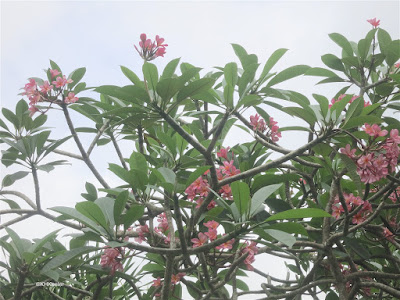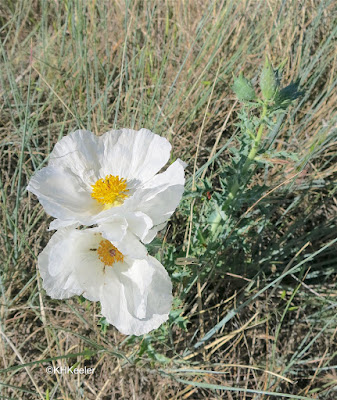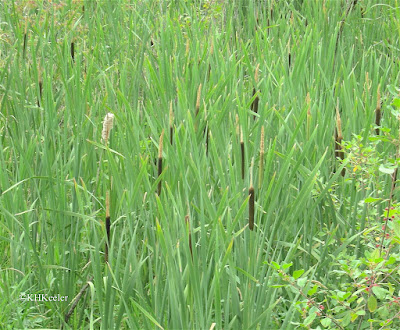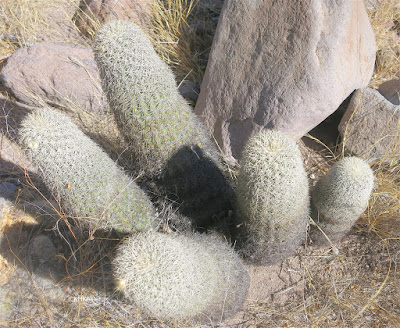 |
| Indian temple tree (Plumeria, dogbane family, Apocynaceae) |
I recently settled down to read a technical book on ecology and found the references (Somebody 2002, Somebodyelse and Coauthor 2011) distracting. Annoying, actually. There was a time when I read over those without a thought.
I elected from the beginning to include references in this blog, but only at the end. But I do stick in technical plant name information (Fancylatin name, twig family, Fancylatinaceae), every time I mention a plant. I am not about to give that up, intrusive as it is. So perhaps I should explain again.
 |
| prickly poppy (Argemone polyanthemos, poppy family, Papaveraceae) |
 |
| reedmace (Typha, bulrush family, Typhaceae) |
For other plants there is confusion because two or more plants have the same common name. For example, hemlock: there is a tree (Tsuga canadensis) and a tall herb (Conium maculatum). And there are two marigolds, Calendula and Tagetes. Scientific names clarify all that.
 |
| marigold (Calendula officinalis, sunflower family Asteraceae) |
 |
| marigold (Tagetes erecta, sunflower family, Asteraceae) |
The idea is that if you know the characteristics of a family it gives you a frame of reference. Even if you never thought about similarities or differences between plants, if I say "it is in the tomato family, Solanaceae," then you think of tomato plants, not palm trees or cacti which are members of other families. Since plants in the same species can interbreed and those in the same genus share many characteristics, and the genera within a family are more closely related to each other than to any other genus, this works.
 |
| genus and species unknown, cactus family, Cactaceae |
 |
| genus and species unknown, sunflower (and thistle) family Asteraceae |
-ideae designates subfamilies. And there are others. But -ceae is the important one in botany: Poaceae the grass family, Orchidaceae the orchid family, Cactaceae the cactus family, etc. and 449 more. (Family names are not very pronunceable, in my accent it is see-ee; so Po ay see ee.)
That is the explanation for those intrusive technical terms: an attempt at clarity. Run your eye past them unless you are trying to look up the plant, then they should be helpful.
Comments and corrections welcome.
For more detailed posts on botanical conventions:
Botany Rules series in this blog: Common Names; Scientific Names; Plant Family; Who Makes the Rules?; Allowing English Descriptions; Acacia Issues; Why Change Plant Names 1 ; Why Change Plant Names 2; Why Some Plants Have 2 Scientific Names
You can download those as a single unit from my website. link
More on the examples
The two hemlocks link
The two marigolds link
Osage orange link
Kathy Keeler, A Wandering Botanist
More at awanderingbotanist.com
No comments:
Post a Comment